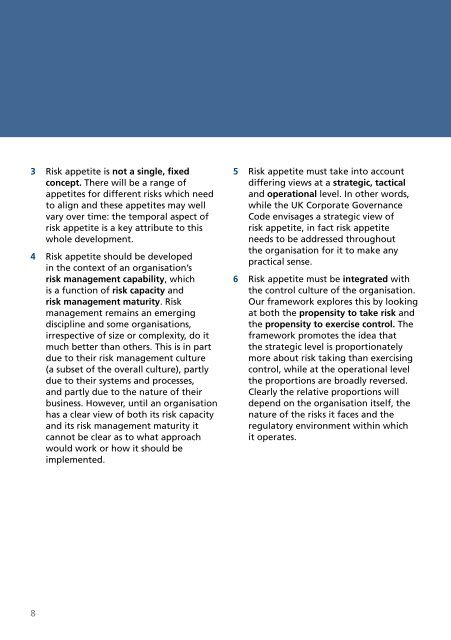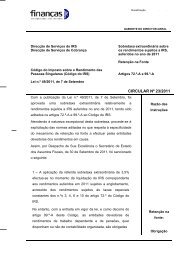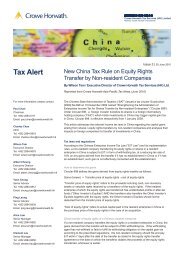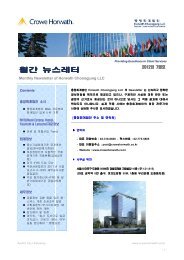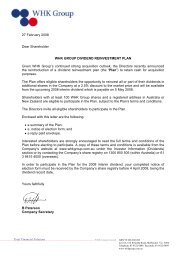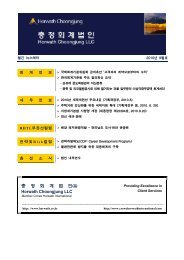Executive Summary - The Institute of Risk Management
Executive Summary - The Institute of Risk Management
Executive Summary - The Institute of Risk Management
Create successful ePaper yourself
Turn your PDF publications into a flip-book with our unique Google optimized e-Paper software.
3 <strong>Risk</strong> appetite is not a single, fixedconcept. <strong>The</strong>re will be a range <strong>of</strong>appetites for different risks which needto align and these appetites may wellvary over time: the temporal aspect <strong>of</strong>risk appetite is a key attribute to thiswhole development.4 <strong>Risk</strong> appetite should be developedin the context <strong>of</strong> an organisation’srisk management capability, whichis a function <strong>of</strong> risk capacity andrisk management maturity. <strong>Risk</strong>management remains an emergingdiscipline and some organisations,irrespective <strong>of</strong> size or complexity, do itmuch better than others. This is in partdue to their risk management culture(a subset <strong>of</strong> the overall culture), partlydue to their systems and processes,and partly due to the nature <strong>of</strong> theirbusiness. However, until an organisationhas a clear view <strong>of</strong> both its risk capacityand its risk management maturity itcannot be clear as to what approachwould work or how it should beimplemented.5 <strong>Risk</strong> appetite must take into accountdiffering views at a strategic, tacticaland operational level. In other words,while the UK Corporate GovernanceCode envisages a strategic view <strong>of</strong>risk appetite, in fact risk appetiteneeds to be addressed throughoutthe organisation for it to make anypractical sense.6 <strong>Risk</strong> appetite must be integrated withthe control culture <strong>of</strong> the organisation.Our framework explores this by lookingat both the propensity to take risk andthe propensity to exercise control. <strong>The</strong>framework promotes the idea thatthe strategic level is proportionatelymore about risk taking than exercisingcontrol, while at the operational levelthe proportions are broadly reversed.Clearly the relative proportions willdepend on the organisation itself, thenature <strong>of</strong> the risks it faces and theregulatory environment within whichit operates.8


